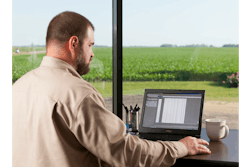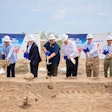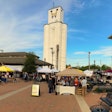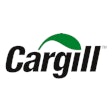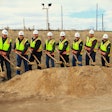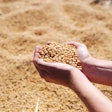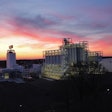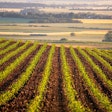Wade Bryant, general manager at Kerr Feed & Grain, represents the fourth generation of the Kerr family to provide feed and nutrition products to producers surrounding Henrietta, TX. In 1930, the company started to plant its roots with small retail location where Bryant's great grandpa started selling feed and other farm supplies. By 1948, Kerr Feed & Grain was born and had established itself as a retailer for other lines of feed; by the mid-50s, it had established the mill and began blending and grinding feed for its customers. From there the company continued to build on to the mill and by the 1970s, it was steam flaking, blending and pelleting own products under the Kerr label.
Today, 90% of Kerr Feed & Grain’s business is retail; the other 10% is wholesale feed delivered straight to the ranch. It mainly manufacturers cattle feed, but also many other feeds, i.e. horse, swine, poultry and other specialty products. The company delivers feed within 100-mile radius of Henrietta, including southern Oklahoma and north Texas.
Recently, Kerr Feed & Grain moved toward a cooperative-like model by diversifying its offerings with lawn and garden products, hardware and electrical supplies to become a one-stop shop for the rural community.
Bryant notes that while many smaller ag outfits in the area have gone out of business — as high operating costs and commodity volatility have made it difficult to compete — and the ones that have survived have done so through consolidated with larger companies. Bryant feels that as long as Kerr Feed and Grain stays price conscious and somewhat competitive, customers will continue to trade with them because they know they are concerned about them and their operation.
“There’s room for a regional, local player like us,” he says. “We have customers who did business with my granddad and continue to trade with us because we do what we can to take care of them."
As Bryant looks to the future, he asserts his feeling that the company will maintain a balance between growth and maintaining the business.
“When we entertain growth — like hiring outside sales reps or increasing our geographic coverage — we feel it’s important to keep things manageable,” Bryant says. This being said, he feels that the bulk cattle feed industry “is definitely the way of the future.”
“In 11 years since I’ve been here full time, I’ve witnessed this growth,” Bryant explains, pointing to the fact the company used to run 75% bagged product and 25% bulk, in his time it has shifted to a 50/50 split.
“There will always be a demand and need for bags, but the bulk industry — as far as distribution and the ability to service more customers — is the way of the future," he says, "especially as these guys continue to invest in feeders that distribute bulk products as well as overhead bins to be able to accept deliver on bulk product.
While some ranch operations won’t be able to justify the capital investment, Bryant attributes the root of the shift to bulk to the efficiency required by an aging ranching population, as they are less likely to take chances with injury bag feeding can deliver.
The grain business
In the late 1960s, the Kerr Feed & Grain erected a 120,000-bushel grain elevator with two elevator legs. As grain production in the area decreased “because the harvesting isn’t what it used to be,” the company now handles wheat during the harvest, May through July, but usually uses it to store grain for the feed mill in the winter.
“Back in the late 80s, we handled hundreds of thousands of bushels of grain, but to be candid with you, after the last harvest we didn’t buy one bushel of wheat,” Bryant explains. “It wasn’t the backbone of our business, but t was always a supplement to what we did. Now when we build our budgets, we know we can’t hang our hat on it. If anything comes in, it’s just extra.”
In the mill
Since Kerr Feed & Grain doesn’t have rail access everything is brought in by truck. After grains are delivered, they are brought to a grinding application, a Jacobson V240 grinder, or delivered directly into ingredient bins. From there, it moves to a two-ton Hayes and Stolz mixer and a manual batching system where auger systems to convey product to the weigh hopper on Mettler Toledo weigh cells to batch feed and then drop it into a blender. From there it can feed in three directions: the pellet mill, a bag texture bagger or to a bulk blended load out that is truly just a blended mixed type feed. From there on the pelleting side, Kerr pellets in three sizes: 3/4, 3/16 and 3/8 inches.
Fifty percent of pelleting production is bagged, 50% is bulk carried overhead by Essmueller drags and a Rotex shaker to deliver a bulk-pelleted product. Anything bagged runs through a Johnson & Sons bagger and from there the bags are feed on a series of conveyors that ultimately feeds to the company’s new robot and packaging system.
Kerr Feed & Grain produces 120 tons/day running at full capacity, which is four to five months/year, or 15,000 tons of grain, annually.
Automated bagging
“What used to take five men to bag and palletize product now takes three men,” Bryant explains. Prior to making the investment in the system, one employee hung bags, one did the sewing, two stacked the feed and another drove the forklift. Today, the robot eliminated the need for the two employees responsible for the physical labor.
Bryant said the primary goals of the investment were to prevent injury and eliminate the man-hours it took to physically stack the feed. The bags from either line are hung on to the bagging scales, once the meet the requisite weight they are dropped on to a flat conveyor standing vertically and are fed into Union special machines with mechanical thread cutters. Chantland-MHS has designed a knock-down-turner conveyor, where bags are knocked on to their backs and then the belt pulls the end out from under them until they lay flat. Then they move to a bag flattener to even out the product in the bags and move to a pick up conveyor where the Fuji robot places bags two one of two stacking stations. It works on one side until the pallet is filled to the determined load amount. Once that side is complete, the robot moves to the other stacking station as the forklift driver swoops into move the full pallet and reset the station, alternating back and forth.
Everything is controlled with a touch screen user interface with 400 stacking configurations depending on the needs of the operator.
“The flexibility to stack on wooden pallets or mini plastic pallets to be delivered directly to the ranch,” Bryant says. At Kerr, 60 tons of bagged feed is stacked in a day.
Not only can you reduce payroll costs, Bryant says, an automated packaging system will reduce workers compensation costs — including liability insurance — by reducing the risk of lifting injuries.
“A decrease in total wages paid (fewer employees) equals lesser workers comp and liability premiums which create additional cost savings over and above reduced claims and lost time from injury,” Bryant explains.
Bryant admits he was originally hesitant about the mechanical and electronic side of things, dealing with a computer because it has a PLC inside the tower that operated the mechanics inside of it, but his concerns have been proven unfounded.
“I would suggest anyone set their worries aside because what we’ve seen and from what we’ve heard they are well built pieces of equipment with very little downtime,” Bryant says. He anticipates the ROI in three to five years.

